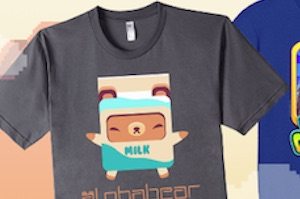
Merch by Amazon is a marketplace for t-shirt designs. Sellers can create the designs, and earn royalties on every sale.
Merch by Amazon is an on-demand t-shirt printing service. Sellers can create t-shirt designs as product listings, and earn royalties on every sale. Amazon prints the t-shirts, and then ships them directly to the customers. Amazon launched the Merch platform in the fall of 2015.
Many marketplace sellers view Merch as an opportunity to add a new revenue stream to their existing business. Others are starting new businesses solely on Merch. Regardless, Merch is reportedly generating quick profits for many entrepreneurs.
Getting Started on Merch
Getting started on Merch is easy.
Step 1. Create a Merch account. Depending on when you read this, you may have to request an invitation. Demonstrate why you qualify as a Merch seller and you can be accepted as quickly as the same day.
Step 2. Research high volume search keywords with low competition. To do this, search a keyword on Amazon for a t-shirt that you think would be popular, such as “Christmas elf t-shirt.” To understand the search volume on Amazon for that specific keyword, consider using Keywords Everywhere or a similar tool.
Look for keywords that have high search volumes (i.e., more than 300 per month), but low search results (i.e., less than 1,000).
Step 3. Hire a freelance graphic designer. If you aren’t a graphic designer, hire a freelancer at an hourly rate to help you create the design for your t-shirt. Meet with the designer and provide details of what you’re looking for, approve estimated hours that they propose, and work with her through multiple rounds of revisions. Make sure that the images meet Amazon’s requirements.
Step 4. Create the Merch t-shirt listing. Similar to product listings, there is an Amazon-search strategy to making your t-shirt listings rank higher than your competitors. In general, focus on the t-shirt’s price, brand name, title, bullet points, and description.
- Price. Look at your competitors’ prices and base your price off of the top 10 search results for your keyword. While the most t-shirts on Merch sell for $19.99, the price can vary among designs. Do your research.
- Brand name. The brand name should be unique for each t-shirt, based on the keyword. For example, if your t-shirt is competing for the keyword “Christmas Elf t-shirt,” the brand name could be “Christmas Elf Tees.”
- Title. When composing a t-shirt title, be descriptive and relevant to the specific t-shirt. For example, if you are competing for the keyword “Christmas Elf t-shirt,” you could use a title of “Cute Green and Red Christmas Elf Playing in Snow T-shirt.”
- Bullet points and description. Use bullet points and a description to sell the consumer on your t-shirt and connect to an emotion he may have to your design. Include synonyms for the main keyword you are competing for. If it’s “elf,” for example, you may include “fairy” or “Santa’s helper” to rank for those keywords, too.
We’ve recently addressed how to optimize Amazon listings. Amazon’s “Merch by Amazon SEO Ultimate Guide” is helpful, too.
Step 5. Collect royalties on sales. Once your t-shirt design is listed on Merch, it becomes available for purchase to Amazon’s millions of customers. As your designs sell, Amazon prints the t-shirts, ships to buyers (eligible for 2-day Prime shipping), and handles customer service issues. You will receive royalties, which vary depending on your “tier.” As you sell more t-shirts, you can graduate to new tiers. The standard royalty, to start, is 25-35 percent.
In short, Amazon Merch is a simple yet potentially profitable channel for ecommerce sellers to diversify their core business model and add a new revenue that requires little overhead and management.
